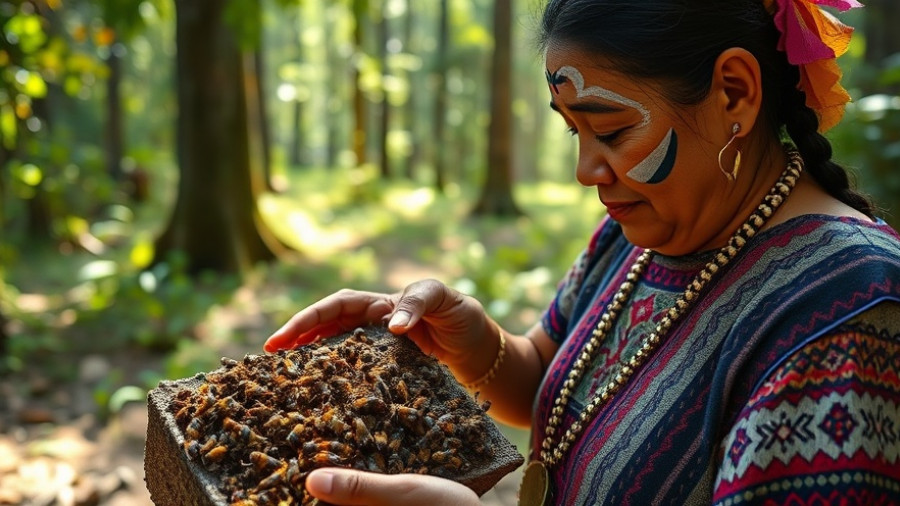
Stingless Bees and Indigenous Wisdom: A Sacred Relationship
Deep in the heart of the Peruvian Amazon, Micaela Huaman Fernandez crouches amidst fallen leaves, admiring the enchanting stingless bees that her ancestors have revered for generations. Known colloquially as "shinkenka" or "angelitas," these bees carry immense ecological and cultural significance for the Indigenous Asháninka people. Unlike their honey-producing cousins, these gentle pollinators are unable to sting, making them integral to both the local ecosystem and traditional medicine.
Confronting the Grave Threats
Despite their critical role, stingless bees are facing a rapid decline due to deforestation, climate change, and habitat destruction—factors that have rendered them largely invisible to the broader world. A recent initiative led by Amazon Research International, in collaboration with the Asháninka community, aims to protect these vital insects by advocating for their legal rights. In an unprecedented move, the local government of Satipo has declared Amazonian stingless bees as subjects of legal rights under the Avireri-Vraem Biosphere Reserve. Scientists and community members, led by Rosa Vásquez Espinoza, are determined to ensure that these bees receive the protection they desperately need.
A New Dawn for Legal Rights of Nature
This monumental declaration recognizes the intrinsic rights of stingless bees to exist and thrive in their natural environments, free from the perils of invasive species and human encroachment. As Espinoza notes, this marks a significant milestone in the "rights of nature" movement, which seeks to provide legal standing to natural entities, ensuring their preservation for future generations. With this recognition, local communities now have a powerful tool to hold accountable those who exploit their habitats.
Empowering Indigenous Voices
The success of this initiative pivots on the involvement and knowledge of local communities who have long depended on these bees for sustenance and medicine. For instance, Huaman has engaged in meliponiculture, or stingless beekeeping, utilizing her experience to train fellow community members to sustainably manage hives. This practice not only conserves bee populations but also generates economic opportunities that benefit local families.
Combining Science with Tradition
As scientific endeavors continue to shed light on the distinctive properties of stingless bee honey—which, adorned with antibacterial and anti-inflammatory compounds, stands apart from traditional honey—local production is becoming more lucrative. Communities are being encouraged to cultivate these bees, further linking cultural heritage with scientific advancements. By enhancing their economic resilience through sustainable honey production, the Asháninka people laid the groundwork for stronger environmental stewardship.
Conclusion: The Future is Green
Recognizing the legal rights of Amazonian stingless bees is not just a win for conservation; it's a validation of Indigenous wisdom that intertwines with the natural world. The collaborative efforts between scientists and the Asháninka community serve as a compelling testament to what can be accomplished when local voices are empowered. As they protect their sacred relationship with these "little angels," they also set a precedent for the global fight against biodiversity loss.
 Add Row
Add Row  Add
Add 




Write A Comment